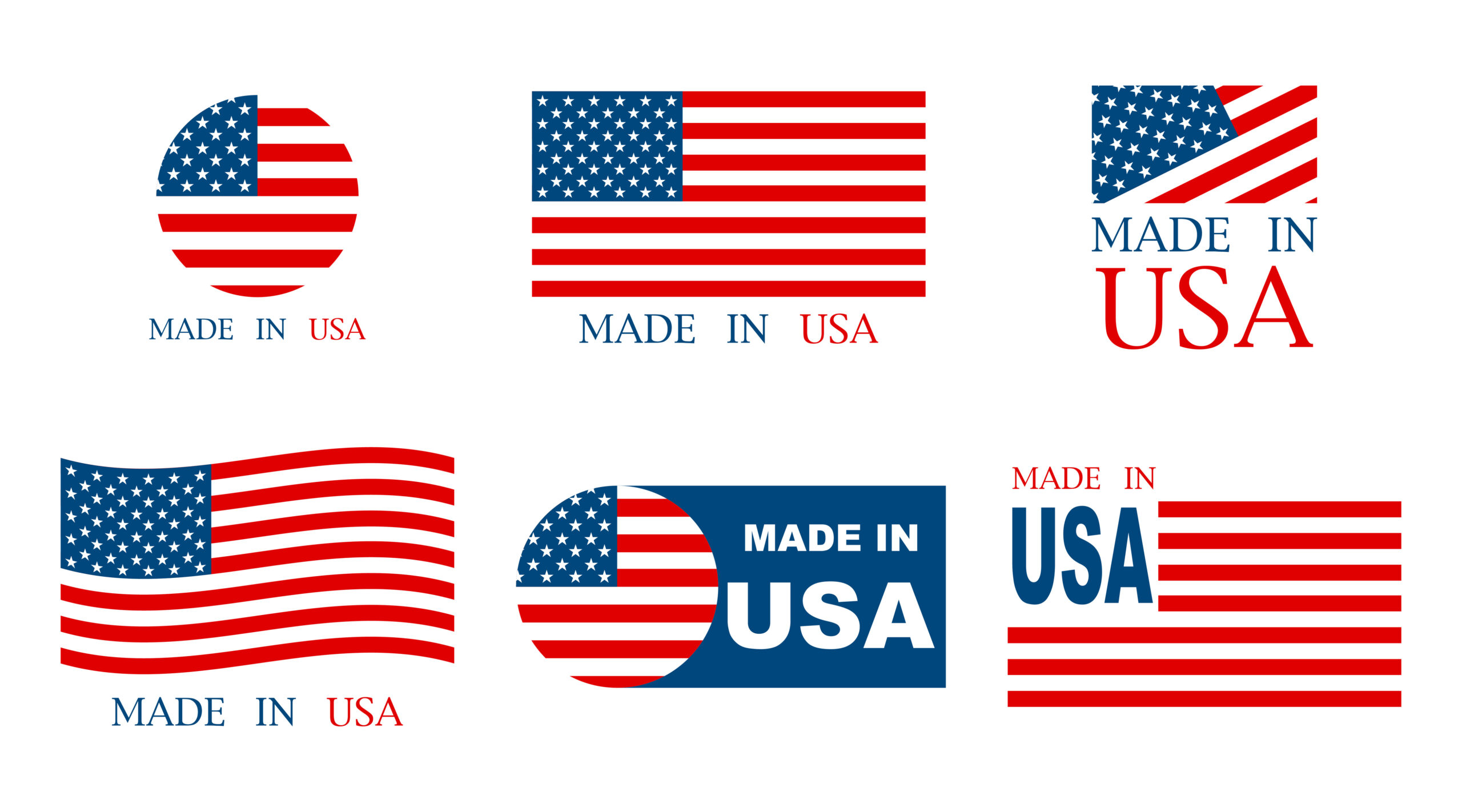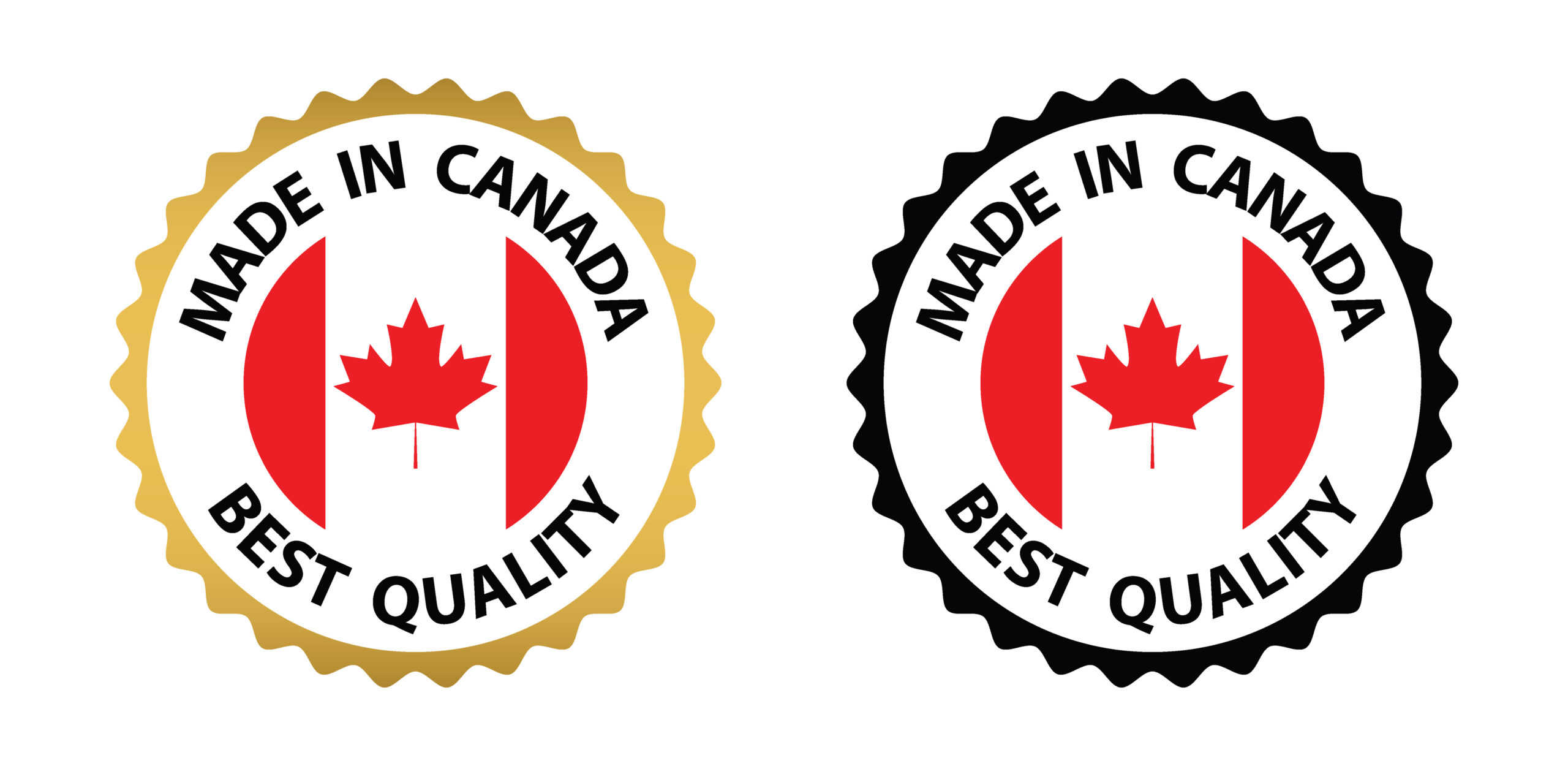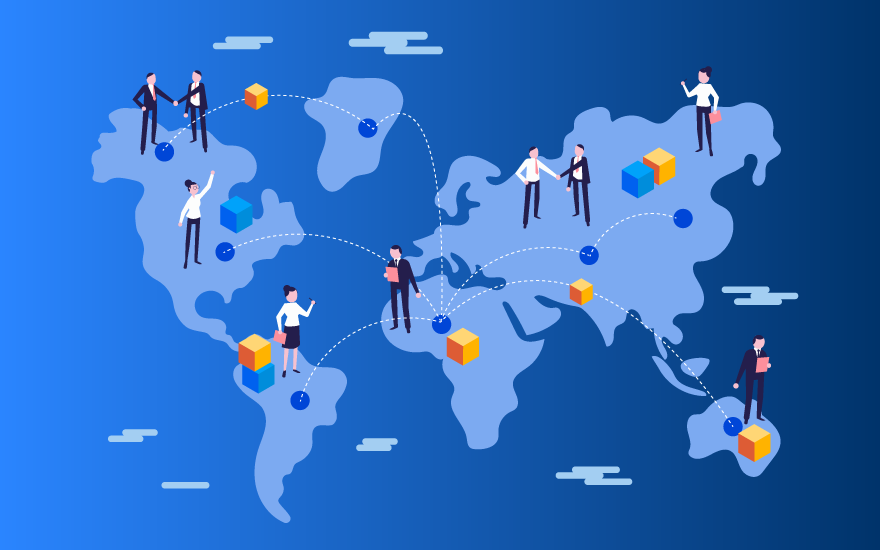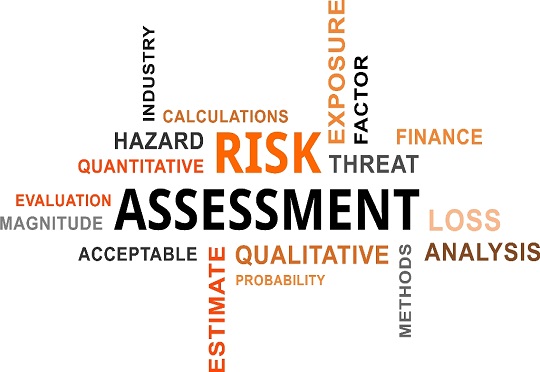Strategies for Sustainable Competitive Advantage in the Age of Disruptive Innovation and Global Challenges
In the rapidly evolving global business landscape of the 21st century, marked by the Fourth Industrial Revolution (4IR) and unprecedented economic disruptions such as the COVID-19 pandemic, companies face the challenging demand of producing high-quality products, offering them at affordable prices, and continuously innovating to meet changing consumer preferences. This dynamic environment underscores the critical importance of innovation as the ultimate source of competitive advantage, compelling businesses to reevaluate their models and strategies to sustain growth, profitability, and market share.
The Paradox of Quality, Affordability, and Innovation
The confluence of striving for high quality, affordability, and frequent innovation presents a seemingly paradoxical challenge for businesses. Yet, evidence suggests that global multinationals and agile small and medium enterprises (SMEs) alike have leveraged this paradox to their advantage by embracing cutting-edge technologies and processes such as robotics, AI, additive manufacturing, and digital twins. These advancements facilitate mass customization, rapid product development, and the ability to swiftly introduce new offerings to the market, thereby capturing market share from less agile competitors. Nonetheless, while multinationals may possess the necessary resources and capabilities, most SMEs find themselves at a disadvantage, though partnerships with manufacturing service providers offer a viable path to compliance with these new economy demands.
Innovation as a Source of Competitive Advantage
Innovation, beyond being a mere buzzword, is recognized as a critical driver for economic growth, development, and sustainable competitive advantage. Strategic investments in R&D enable companies to introduce groundbreaking products, services, and business models, ensuring they remain relevant in a hypercompetitive world. The trajectory of innovation has shifted, with significant value being created not only in developed economies but also across the global marketplace. This shift necessitates a strategic approach to innovation, encompassing product development, market introduction, and the leveraging of technological drivers to meet and exceed market demands.
Disruptive Innovation: The Clayton Christensen Perspective
Clayton Christensen’s theory of disruptive innovation offers a lens through which to view innovation not as an enhancement of existing products but as a means to make them more accessible and affordable, thereby reaching a broader audience. Companies like Tesla and Uber, while often heralded as breakthrough innovators, embody the essence of disruption by fundamentally altering accessibility and affordability in their respective industries. The theory highlights the importance of understanding the needs of underserved markets and the role of ecosystem development in driving adoption. Disruptive innovation emphasizes the necessity for companies to be agile and adaptive, traits exemplified by companies such as Dow Corning, which successfully navigated the commoditization of its core business through strategic innovation.
Self-Disruption and Cannibalization as Strategic Imperatives
The concept of self-disruption and cannibalization emerges as a potent strategy for sustaining long-term profitability and relevance. Faced with rapid changes in consumer preferences, technology, and competitive landscapes, companies are increasingly considering the deliberate disruption of their own successful products as a means to preclude external competitors from eroding their market share. This proactive approach has been effectively employed by industry giants like Apple, showcasing the potential of self-cannibalization to foster innovation, ensure customer loyalty, and maintain competitive edge.
Conclusion: Navigating the Future with Innovation and Agility
In conclusion, the paradox of delivering high quality, affordability, and rapid innovation is not insurmountable but rather a strategic imperative in today’s global business environment. The integration of disruptive innovation, strategic self-disruption, and a keen focus on agility and adaptability forms the cornerstone of sustainable competitive advantage. Companies that embrace these principles, invest in R&D, and cultivate an innovative culture are poised to lead their industries, overcoming challenges posed by rapidly evolving market demands and technological advancements. In the face of global challenges and opportunities, innovation, in its many forms, remains the ultimate path to enduring success and growth.
Key Takeaways
• The demand for high quality, affordability, and rapid innovation represents a strategic challenge and opportunity for businesses.
• Leveraging cutting-edge technologies and embracing disruptive innovation are essential for sustaining competitive advantage.
• Strategic self-disruption and cannibalization can protect and enhance market position in the face of external threats.
• A comprehensive, agile approach to innovation is critical for success in the hypercompetitive and rapidly changing global business landscape.
Navigating Global Uncertainty: Strategic Frameworks for International Expansion and Risk Management
In an era characterized by unparalleled global uncertainties, including the COVID-19 pandemic, geopolitical tensions, technological disruptions, and environmental concerns, the necessity for robust strategic frameworks in guiding international business expansion has never been more critical. Insights from leading management consultancies (MBB, Kearney), TMCG research, academic theories, and practical business considerations are valuable to propose a general approach for multinational corporations (MNCs) navigating the complexities of global expansion and foreign direct investment (FDI). The global economic landscape is in flux, influenced by rapidly changing geopolitical dynamics, technological advancements, and a reevaluation of globalization’s benefits and drawbacks. Amidst this volatility, MNCs face the dual challenge of seizing growth opportunities in emerging markets while managing the inherent risks associated with such expansions. This article explores the strategic imperatives for MNCs in leveraging global opportunities effectively while mitigating risks, drawing upon recent scholarly and business literature on country risk analysis, the internationalization process, and the dynamics of global financial environments. 2. Country Risk Analysis: A Prerequisite for Strategic Expansion Country risk analysis remains a cornerstone for assessing the viability of international investments and operations. This multifaceted analysis examines socio-political, economic, technological, ecological, and cultural risks. As global interdependencies deepen, understanding the nuanced landscape of potential markets becomes imperative for formulating entry and operational strategies. This analysis informs the “go/no-go” decision for entering specific markets and guides the choice of entry mode, whether through greenfield investments, mergers and acquisitions (M&As), or strategic alliances. 3. Global Investment Considerations: Beyond Traditional Borders The global investment environment has evolved, with significant shifts in the sources and destinations of FDI. The BRIC economies (Brazil, Russia, India, and China), among other emerging markets, have emerged as pivotal players in the global economy, challenging the traditional dominance of developed markets. This shift necessitates reevaluating investment strategies, prioritizing agility, and understanding local markets in navigating the complexities of these economies. Considering foreign exchange risks, political stability, and cultural nuances becomes paramount in crafting a resilient global strategy. 4. The Role of M&As in Strategic Globalization M&As have become a strategic tool for rapid internationalization, especially for companies from emerging markets seeking to establish a presence in developed economies. These transactions offer a pathway to acquire strategic assets, technological capabilities, and market access. However, the high failure rate of cross-border M&As underscores the importance of due diligence, integration planning, and cultural alignment in realizing the expected synergies and strategic objectives. 5. Navigating the VUCA World: Agility and Resilience in Global Strategy The Volatility, Uncertainty, Complexity, and Ambiguity (VUCA) of the global business environment demand that MNCs adopt more flexible and adaptive strategies. This involves reassessing global trends, competitive dynamics, and internal capabilities to pivot and scale operations in response to emerging opportunities and risks. Building resilient global value chains, fostering innovation, and nurturing local partnerships are essential to a successful global strategy. 6. Key takeaways from internal TMCG research and consultation with insights from top management consultancies like MBB, and Kearney are as follows: a. Global Investment Landscape and FDI Dynamics: The current global investment landscape is characterized by intensified competition for FDI, a pressing need for sustainable and socially impactful investment strategies, and the importance of technological and innovation-based competitiveness. b. Strategic Importance of Emerging Markets: Emerging markets continue to offer significant growth opportunities for FDI. Strategies that prioritize sustainable growth, technological advancements, and socio-economic impact are increasingly important in attracting and retaining investment. c. Risks and Rewards of Foreign Investments: Country risk analysis must delve deeply into potential investment destinations’ political, economic, and socio-cultural dynamics. Understanding these facets helps in making informed decisions about entering or expanding within a foreign market. d. Technological and Digital Transformation: The rapid pace of technological change and the growth of the digital economy have profound implications for FDI. Companies and countries that leverage technology and innovation can attract more FDI and achieve sustainable economic growth. e. Sustainability and Social Impact: There’s a growing emphasis on the role of FDI in driving positive social impact, with investments increasingly evaluated based on their environmental, social, and governance (ESG) criteria. This shift underscores the importance of aligning FDI strategies with broader sustainability goals. f. Customized and Strategic FDI Approaches: Successful FDI strategies are increasingly tailored to investors’ and recipient countries’ specific needs and strengths. This involves a detailed analysis of sectors with growth potential, creating value propositions that align with investors’ objectives, and providing comprehensive support for investment projects. g. Adapting to Global Trends and Policies: Understanding global economic trends, policy shifts, and trade agreements is crucial for navigating the complexities of FDI. Investors and countries must remain adaptable and informed to capitalize on opportunities and mitigate risks. Conclusion: Strategic Imperatives for the 21st Century Global Business As the global economy evolves, MNCs must navigate the intricacies of international expansion with a strategic, informed, and agile approach. This entails a deep understanding of the risks and opportunities inherent in global markets, a commitment to sustainable and responsible business practices, and a focus on building long-term value for all stakeholders. By adopting comprehensive strategic frameworks encompassing risk management, cultural understanding, and innovation, businesses can thrive in the dynamic and interconnected world economy of the 21st century.
Navigating the Future: Strategic Agility in the 21st Century’s Competitive Landscape
In an era where technological advancements and global market dynamics are evolving at an unprecedented pace, businesses face the daunting task of crafting strategies that not only withstand the tests of time but also leverage emerging opportunities for sustainable growth. This article synthesizes insights from TMCG’s proprietary research, insights from leading management consultancies, including (MBB) [McKinsey & Company, Boston Consulting Group (BCG), and Bain & Company], Arthur D. Little, Deloitte, and Ernst & Young, to propose a forward-looking framework for strategic agility that addresses the complexities of the 21st-century competitive landscape.
The Evolving Nature of Competitive Strategy
Historically, competitive strategy has revolved around core principles such as cost leadership, differentiation, and focus strategies. These traditional approaches, championed by the likes of Porter, have guided companies in navigating competitive waters by advocating for a singular strategic focus. However, the digital revolution and the advent of Industry 4.0 have introduced unpredictability and complexity that demands reevaluating these conventional strategies.
The Imperative for Strategic Agility
Strategic agility emerges as a crucial paradigm for businesses aiming to thrive amidst volatility, uncertainty, complexity, and ambiguity (VUCA). It is characterized by an organization’s ability to remain flexible, innovative, and responsive to rapid market changes. It involves sensing environmental shifts, seizing opportunities through quick decision-making, and transforming operations and business models to maintain competitive advantage.
Key Pillars of Strategic Agility
1. Sensing: Proactive monitoring of global trends, including technological breakthroughs, consumer behavior shifts, and regulatory changes, to anticipate market opportunities and threats.
2. Seizing: The capacity to quickly capture emerging opportunities through innovative products, services, and business models that address unmet customer needs or create new markets.
3. Transforming: Continuous adaptation and realignment of organizational resources, processes, and capabilities to support dynamic strategic objectives and ensure long-term sustainability.
Learning from Amazon and Google: A Case for Diversification and Innovation
Companies like Amazon and Google exemplify the successful application of strategic agility through diversification and relentless innovation. Amazon’s evolution from an online bookstore to a global e-commerce and cloud computing giant illustrates the power of seizing and transforming in response to market opportunities. Similarly, Google’s foray into various digital and technology domains underscores the importance of continuous innovation and adaptation.
The Role of Self-Disruption and Cannibalization
In line with the insights from TMCG’s analysis, self-disruption and cannibalization emerge as potent strategies for sustaining competitive advantage in the face of potential market disruptors. Companies can stay ahead of competitors by preemptively innovating and potentially undermining their existing product lines and maintaining their market dominance.
Towards an Integrated Strategy Framework
In the face of the 21st century’s challenges, businesses must consider an integrated strategy that combines elements of cost leadership, differentiation, and focus with an overarching emphasis on innovation and customer-centricity. This approach calls for a delicate balance between exploiting existing competencies and exploring new opportunities, enabling firms to navigate the complexities of the global competitive environment effectively.
Embracing the Future with Strategic Foresight
As we advance into the 21st century, the need for strategic agility becomes increasingly apparent. Businesses that can sense, seize, and transform will survive and thrive in the ever-evolving competitive landscape. By embracing strategic agility and fostering a culture of innovation and adaptability, companies can secure their place in the future of global business.
This article underscores the necessity of rethinking competitive strategy through the lens of strategic agility, offering a roadmap for businesses determined to navigate the uncertainties of the 21st century with confidence and foresight.
Innovation & Design
TMCG’s innovation and design capabilities focus on innovating at the product and/or service levels. We engage in the innovation journey from ideation through the transition into profitable products and/or services that have significant commercial potential and meet identified market needs. TMCG helps organizations that want to stay competitive in today’s rapidly changing global business environment. Our innovation and design capabilities aid organizations develop new products, services, and processes that meet the needs of their customers and give them a competitive edge. The key elements that are essential for building strong innovation and design capabilities within an organization include but are not limited to the following:
- Creativity: The ability to generate new and original ideas. Encouraging a culture of creativity within the organization is key to fostering innovation.
- Collaboration: Innovation often requires the input and ideas of people from different departments and disciplines. Encouraging collaboration and cross-functional teamwork can facilitate the exchange of ideas and the development of new products and services.
- Customer focus: Understanding the needs and desires of customers is essential for developing products and services that meet their needs. Organizations should prioritize customer research and gathering customer feedback to inform their innovation efforts.
- Experimentation: Innovation often involves taking risks and trying new things. Organizations must create a culture where it’s okay to experiment and take calculated risks in pursuing innovation.
- Continuous learning: Innovative organizations must be willing to learn and adapt continuously. That can involve investing in employee training and development and keeping up with industry trends and best practices.
- Design thinking: This process involves understanding the needs and wants of users, generating/developing and testing ideas, prototyping, and iterating on those ideas. Design thinking can be valuable for organizations looking to create innovative products and services.
International Business
Our company’s mission is to enable forward-looking companies to venture into, expand in, and compete profitably in the world’s most geographic strategic regions. International business ebbed during the past two years owing primarily to the COVID-19 pandemic, supply chain disruptions, and, lately, the upheaval wrought by the war in Ukraine. Global economic activity is poised to decline sharply to 2.9% in 2022, down from 5.7% in 2021 (World Bank Group, 2022), and negligible improvement in 2023 and 2024 is plausible. Is there a silver lining for the international business environment? Companies better organized to exploit the limited growth opportunities in attractive global markets could still eke out modest revenues and profits. Many regions will face tepid/stagnant economic growth for prolonged periods. Why? Name three: higher inflation risks, rising interest rates, and supply chain disruptions taking longer to diminish. TMCG helps companies proactively venture into the most opportunistic global markets and/or leverage their international business capabilities to expand their geographic footprint beyond current captive market(s). Risk reduction, internalization, and leveraging alliance synergies are critical success factors in the 21st-century VUCA global business environment.
A. Country Analysis For Entry, Business Development, Investment, And Operations
- Country And Business Risk Analysis Techniques
- Country Analysis Techniques In Evaluating Business Opportunities And Risks
- Assess The External And Internal Environments For International Business
- Development Data Evaluation Data For Determining Business Development Opportunities And Risks
- Recommend “Go/No Go” Business Development Initiatives
- Assess The External And Internal Environments For International Investment
- Data Evaluation For Determining Investment Opportunities And Risks
- Recommend “Go/No Go” Investment Initiatives
- Assess The External And Internal Environments For International Operations
- Data Evaluation For Determining Operations Opportunities And Risks
- Recommend “Go/No Go” Operations Initiatives
B. Global Trade/International Trade
C. Equity Strategic Alliances
Strategy
We help companies formulate and implement 21st-century winning business strategies to drive profitable growth in the rapidly changing hypercompetitive VUCA global business environment. We assess the mix of the classical and “nontraditional” competitive strategies and develop and recommend the optimal singular strategy or integrated business strategies that drive(s) profitable growth. Strategy is a plan of action leading to a destination. Business strategy is an organization’s deliberate actions to position and/or find valuable new places to create sustainable competitive advantage and drive profitable growth through efficiently allocating capital across business unit(s). Strategy concerns an organization’s long-term direction by making the right choices. It requires choosing unique and different activities that rivals find difficult to match or perform differently. Given the far-reaching implications of poorly formulated and executed strategy on the going concern status of an organization, the approach of future-thinking organizations in search of sustainable, profitable growth in the 21st century must address the persistent gap between an organization’s ambitions and performance. The gap is more alarming in the context of an overarching global strategy wherein those responsible for formulating the strategy and the employees and frontline managers closest to customers who implement the organization’s strategy do not understand or are unaware of the strategy. Furthermore, the vast geographies that may separate the framers of the global strategy and those executing the strategy may widen the gap between company ambition and operating results. TMCG helps organizations address their most crucial global strategy problems to facilitate the creation of substantial and enduring value. TMCG will partner with your organization to identify, develop, and translate your global strategy into actionable corporate plans to achieve sustainable, profitable growth. And maximize enterprise value. We help companies address four pivotal questions that are critical to improving the quality of planning.
- How can we best increase our agility and preparedness in the rapidly changing and increasingly complex hypercompetitive global business environment?
- To create, sustain and or enhance our competitive advantage, how best can we generate creative insights?
- How must our organization translate strategic vision into actionable corporate plans and realistic annual budgets?
- Are the current processes to achieve our objectives focused, or can they be markedly improved?
How and why future-thinking organizations leverage the Innovation – sustainability nexus to develop new products, services, processes, and technologies.
TMCG is profoundly diving into understanding how future-thinking organizations could channel their net zero ambitions to address our generational global climate and sustainability (C&S) challenge while enhancing innovation capabilities. Surveys by Mckinsey and BCG of global multinational companies executives rated Innovation and sustainability among their top priorities. In the 21st century, Innovation and sustainability must be seen as compatible rather than conflicting goals. Innovation and sustainability can be linked and used to create new products, services, and processes that are both innovative and environmentally friendly. For future-looking organizations, Innovation and sustainability are inextricably linked to developing new products, services, and processes. This innovation output is achieved through a variety of approaches, including the following:
- Designing products with sustainability in mind: This involves considering the environmental impact of a product throughout its lifecycle, from raw material extraction and production to disposal or recycling.
- Designing for reuse and recyclability: Consider designing products and packaging that can be easily reused or recycled rather than thrown away after a single use.
- Using sustainable materials and implementing sustainable production processes: Look for materials and production processes that have a lower environmental impact. For example, you might use recycled materials, reduce waste, minimize the use of harmful chemicals or materials, or adopt energy-efficient technologies and manufacturing processes.
- Offering sustainable services can involve providing services that help customers reduce their environmental impacts, such as offering car-sharing or public transportation options.
- Incorporate sustainable features: You can also incorporate features that make a product or service more sustainable, such as energy-efficient features or water-saving technologies.
 Another practical example wherein sustainability can be literally “woven” into clothing is to innovate novel “affordable” phase change materials that control temperature. The basic idea is to create, develop, and fast-to-market materials/fabrics/clothing that automatically cools the body in hot weather conditions while warming up the body in cold weather conditions. Imagine the net-zero emission effect on the global climate as it would dramatically reduce HVAC costs all over the planet. This is not a pipe dream but a reality at NASA and is certainly not available to the mass market with today’s technology. However, digital technology advances in quantum computing, AI, and other radical innovations in material science, manufacturing processes, and chemistry can make phase-change materials/fabrics/ clothing a reality in the not-too-distant future.
Another practical example wherein sustainability can be literally “woven” into clothing is to innovate novel “affordable” phase change materials that control temperature. The basic idea is to create, develop, and fast-to-market materials/fabrics/clothing that automatically cools the body in hot weather conditions while warming up the body in cold weather conditions. Imagine the net-zero emission effect on the global climate as it would dramatically reduce HVAC costs all over the planet. This is not a pipe dream but a reality at NASA and is certainly not available to the mass market with today’s technology. However, digital technology advances in quantum computing, AI, and other radical innovations in material science, manufacturing processes, and chemistry can make phase-change materials/fabrics/ clothing a reality in the not-too-distant future.
Country Risk Analysis for Foreign Direct Investment
Country risk analysis is performed by buyers (financial and strategic) and enterprises to assess the potential risks and rewards of investing and/or conducting business in a particular country. Several factors can affect the risk of venturing into a specific country, including social, technological, economic, ecological, and political, to name five. By analyzing these forces, businesses, investors, and financial institutions can better determine the level of risk associated with conducting business or investing in a particular country and make informed entry mode decisions or whether to invest there. Tenarries MCG thinks that the end state of globalization is open to debate. Is globalization in retreat, slowing down due to growing nationalism in several developed and developing countries, or could it accelerate and morph into a globality phenomenon? Irrespective of the end state of the globalization juggernaut, developed market multinationals will continue to embark on foreign direct investment (FDI). About 95% of global consumers live outside North America. Several U.S. multinationals currently generate roughly 40%-50% of global sales and profit from international markets. They also venture abroad to source raw materials, manufacture products, and recruit talented management and productive employees, to name three. FDI is inherently risky, but the risk is generally elevated if the outflow is towards emerging, developing, and underdeveloped nations in Asia, Africa, LATAM, Eastern Europe, and MENAT. Consequently, it is imperative that before undertaking FDI, companies must conduct a country and business risk analysis to arrive at a go/no-go decision. There are several country risk models and approaches to country risk analysis depending on the sources of risks and the nature of the investment. While political risk is a strong influencing force in country risk assessment, in this note, TMCG is focused on the global financial environment risk measures relevant to evaluating go/no-go decisions for FDI (specifically greenfield investments). Country Risk Analysis for Investment
- Assess the external and internal environments for international investment
- Evaluate data for determining investment opportunities and risks
- Recommend “go/no go” investment initiatives
- Global investment risk
- The risk-sharing potential of host country businesses
- Capital budgeting in global investment decisions
- Credit risk
- Managing financial risk
- Foreign exchange risk exposure
- Translation exposure
- Transaction exposure
- Economic exposure
- Managing foreign exchange risk
- Foreign direct investment considerations
- Legislation (rules and regulations) governing FDI
- Government FDI policies
- Decisive factors for investing in transition economies
- a) Market size
- b) Potential economic growth
- c) Economic and political stability
- Managing the cultural differences between the home and host countries
- Elements of the socio-cultural environment
- Impact of verbal and nonverbal communication on investment negotiations
- Determinants of go/no-go initiatives
- R&D project evaluation
- Prioritization and selection
- Increasing competition
- Distributive power
- Relative risk of opportunities available to the firm
- Capital budgeting
- Financing decisions
- Working Capital and cashflow management decisions
- Remittance of profits and capital
- Translation Exposure (Accounting)
- Transaction Exposure
- purchasing or selling on credit goods and services whose prices are stated in foreign currencies (i.e. A/R and A/P)
- borrowing or lending funds when repayment is to be made in a foreign currency
- being a party to unperformed foreign exchange forward contract; and
- otherwise acquiring assets or incurring liabilities denominated in foreign currencies.
- Economic Exposure (Operating)
- Transaction costs
- Managerial time
- Reduction in average cashflow
Effect of corporate strategy on firm performance
TMCG’s strategy practice (business and corporate) helps clients to improve performance. Corporate strategy concerns questions about which portfolio of industries a company must compete in to be successful. Corporate strategy outlines the overall goals and objectives of the company and the actions and resources needed to achieve those goals. The scope and variation in the deployment/distribution of firm assets, sales, employment, capital budget, or other indexes of firm resources among the range of existing industries is key to implementing a successful corporate strategy. In many developed economies, multinational and industrial companies participate in several industries. The choice/selection of the plausible corporate strategy that enables the realization of corporate goals and objectives is painstakingly formulated and implemented. It is not a simple set of actions undertaken by top managers who must contend with their specialized subunits’ varied and conflicting demands. Studies in academia and management consultancies found sufficient evidence that corporate strategy contributes to improvements in profitability differences among firms.
There are several strategies for achieving a diversified firm’s long-term objectives. The strategies are classified in a variety of ways, but four common ones are:Growth Strategies
-
a) Concentration strategies/Concentrated Growth
- i) Market penetration, ii) Market development, iii) Product development
-
b) Integration strategies.
- i) Horizontal and ii) Vertical integration
-
c) Diversification strategies
- i) Concentric diversification, ii) Horizontal diversification, and iii) Conglomerate diversification
- Stability/Neutral Strategies:
Stability/Neutral Strategies: Pursue any of the growth strategies in moderation
It dictates that the company keep doing what it has been doing to maintain its competitive position. Firms most likely to pursue a stability strategy are:- Small, privately owned firms
- Large, dominant firms; and
- Heavily regulated firms
Decline or Defensive Strategies
– Short-run reactions to poor management or to unexpected environmental events, such as competitors’ actions; they are appropriate when a firm needs to regroup to improve efficiency after a period of fast growth, when long-run growth and profit opportunities are unavailable in an industry, during periods of economic uncertainty, or when other opportunities are simply more attractive than those pursued. Strategies for a planned decline include- a) Retrenchment /turnaround
- b) Divestiture
- c) Harvest
Exit/Closure Strategies
– Involves closing the firm. The primary exit/closure strategies are:- a) liquidation and
- b)bankruptcy.
Strategy Change Grid
Each of the corporate strategies is derived from changing one or more of five key elements:- product
- market,
- industry,
- industry level, and
- technology
| Product | Market | Industry | Industry Level | Technology |
|---|---|---|---|---|
| Current or New | Current or New | Current or New | Current or New | Current or New |
Grand Strategies: Model A – 15 Strategies |
||||
| Concentrated Growth /Market Penetration | Market Development | New Product Dev. | ||
| Innovation | Horizontal Integration | Vertical Integration | ||
| Concentric Diversification | Conglomerate Diversification | Turnaround | ||
| Divestitures | Liquidation | Bankruptcy | ||
| Joint Ventures | Strategic Alliances | Consortia a) Keiretsu – Japan b) Chaebol – Korea | ||
Grand Strategies: Model B – 13 Grand Strategies |
||||
| Concentrated Growth a) Market Penetration b) Market Dev c) New Prod. Dev | Innovation | Horizontal Integration | ||
| Vertical Integration | Concentric Diversification | Conglomerate Diversification | ||
| Divestitures | Liquidation | Turnaround | ||
| Joint Ventures | Strategic Alliances | Bankruptcy | ||
| Consortia a) Keiretsu – Japan Chaebol – Korea | b) |
Innovation is the Ultimate Source of Competitive Advantage
Innovation is one of the powerful drivers of economic growth and development. Innovation is a necessity in the twenty-first century’s hypercompetitive world. Businesses that fail to undertake strategic investments in R&D (to introduce innovative products, services, processes, or business models) run the risk of being sidelined by agile innovative competitors, losing key staff, and or being susceptible to deteriorating operating performance. Innovation has long been recognized as playing a critical role in creating and enhancing firm value. It is the ultimate source of competitive advantage as reflected in the significant value it has created for stakeholders of the world’s most innovative organizations such as Amazon, Apple, Coloplast, Enphase, Google, Intuitive Surgical, MediaTek, Microsoft, Samsung, to name ten. Innovation is a necessity and requirement for sustainable growth in the 21st century because of the increasingly hypercompetitive and complex global business environment brought about by the changing dynamics of innovation, globalization, and the realities of the new world economic order. Innovation no longer traverses in one direction from developed to developing economies in the new economic system. And because innovation is a prerequisite for sustainable growth and also being the ultimate source of competitive advantage, it must be an integral component of an organization’s strategic growth and globalization goals. Consequently, innovation must be approached strategically not just by firms that plan to market globally, but also by small businesses in specialized markets. TMCG helps companies develop and execute innovation strategies that develop innovative products, services, processes, and business models at a faster time-to-market pace, improve operating performance, ensure sustainable growth, increase profitability and maximize firm value. The collaboration between organizational leadership, the creativity of an organization’s entrepreneurial team, and TMCG’s innovation competencies enhance clients’ innovative capabilities and thus enable them to successfully develop and fast to market new products, services, processes, and business models. From idea generation to commercialization TMCG participates in the entire innovation process of clients beginning with idea-generating through concept screening to business analysis, product development/refinement to product commercialization at fast to market pace. At every stage in the innovation process, we seek answers to technology and market questions to development. The technological drivers extend beyond product and process but also reflect the innovative capabilities of the organization by demonstrating the uniqueness of potential products, services, and business models. In the first phase, [idea generation/concept searching], we seek answers to questions concerning the technical feasibility and potential market demand. In the second and third phases [concept testing and business analysis], we resolve technical questions by comparison with market preference questions. In the final phases [product development/refinement, product testing/commercialization], technology diffusion questions are matched with fast-to-market pace questions.









